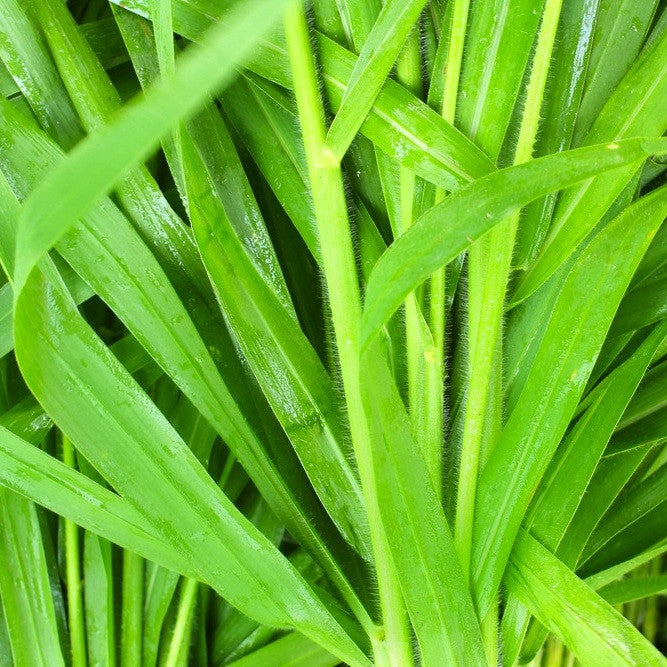TIMELESS Essential Oils
Vetiver, Organic
Couldn't load pickup availability
Pure, Therapeutic Vetiver essential oil, Organically Grown
Botanical name
Vetiveria zizanioides
Extraction method / Source
Steam distillation / roots
Aroma
Heavy, smoky, earthy, balsamic with sweet undertones
Note classification
Base
Odor Intensity
5
Key constituents
Vetiverol 65 - 70%
Plant description
Botanical family: Poaceae or Graminaceae (Grasses)
Vetiver is a tropical grass that is native to India, and has been naturalized to many tropical areas.
Regions of Production
Madagascar
Growing Practices
Organically farmed. Plants are tested after harvest for purity.
History / Fun Facts
Properties
Calming; aphrodisiac, regenerative, insect repellent, promotes healthy skin healing. (Battalia, 2003)
Please refer to the Glossary for terms which may be new to you.
Uses / Benefits
Calming, regenerative for the skin, repels insects (especially moths), fixative for natural perfumes. Benefits individuals living with autism and ADHD - see the Essential Oils for Autism and ADHD page in our Topics section. A sensual base note for natural perfume making.
Fragrant influences
Grounding, calming, promotes spiritual growth.
Modes of Administration
Topical: massage, compress, skin care
Inhalation: direct inhalation, diffuser, oil vaporizer, aromatherapy inhaler
Blends well with
Bergamot, Black Pepper, Clary Sage, Coriander, Eucalyptus Lemon, Geranium, Ginger, Pink Grapefruit, Jasmine, Lavender, Lemon, Lemongrass, Litsea Cubeba (May Chang), Mandarin, Melissa, Sweet Orange, Rose, Sandalwood, Ylang Ylang
Safety
Non-toxic, non-irritating, non-sensitizing
Notice
This information is for educational purposes only. It has not been evaluated by the US Food and Drug Administration. It is not intended to diagnose, treat, cure or prevent any condition or disease. Although we strive to provide information which is accurate and up to date, we cannot guarantee the accuracy or completeness of this information.
Precautions
Pure essential oils are highly concentrated plant extracts. Do not use them undiluted, or in the eyes or mucus membranes. If applying an essential oil to the skin, always dilute it with a proper carrier oil and test on a small patch of skin before applying to a large area. Do not take them internally except under the direction of a qualified professional trained in Aromatherapy. Always familiarize yourself with the safety, contraindications and proper preparation of each essential oil before use. Note that when using essential oils for children and the elderly, very low concentrations should be used. Keep all essential oils away from children and pets.
References
Althea Press, Essential Oils: Natural Remedies, 2015. Althea Press, Berkeley, CA.
Battaglia, Salvatore, The Complete Guide to Aromatherapy, Second Edition, 2003. The International Centre of Holistic Aromatherapy, Brisbane, Australia
Green, Mindy, Natural Perfumes, 1999. Interweave Press, Loveland, CO.
International Fragrance Research Association, http://www.ifraorg.org/en-us/standards (January 5, 2016)
Schnaubelt, Kurt, Advanced Aromatherapy: The Science of Essential Oil Therapy, (English translation)1998. Healing Arts Press, Rochester, VT.
Schnaubelt, Kurt, The Healing Intelligence of Essential Oils: The Science of Aromatherapy, 2011. Healing Arts Press, Rochester, VT.
Tourles, Stephanie L, Hands On Healing Remedies, 2012. Storey Publishing, North Adams, MA.
United States Food and Drug Administration, HHS, 182.1 Substances That Are Generally Recognized as Safe, 182.20 Essential oils, Oleoresins (solvent-free), and natural extractives (including distillates), http://www.gpo.gov/fdsys/CFR-2012-title21-vol3-sec182 (January 28, 2016).
Worwood, Valerie Ann, The Complete Book of Essential Oils & Aromatherapy, 1991. New World Library, Novato, CA.
TIMELESS Essential Oils guarantees the purity and quality of all our therapeutic oils. The current Certificate of Analysis is available upon request. All essential oils are best stored in an airtight container away from heat and light.


